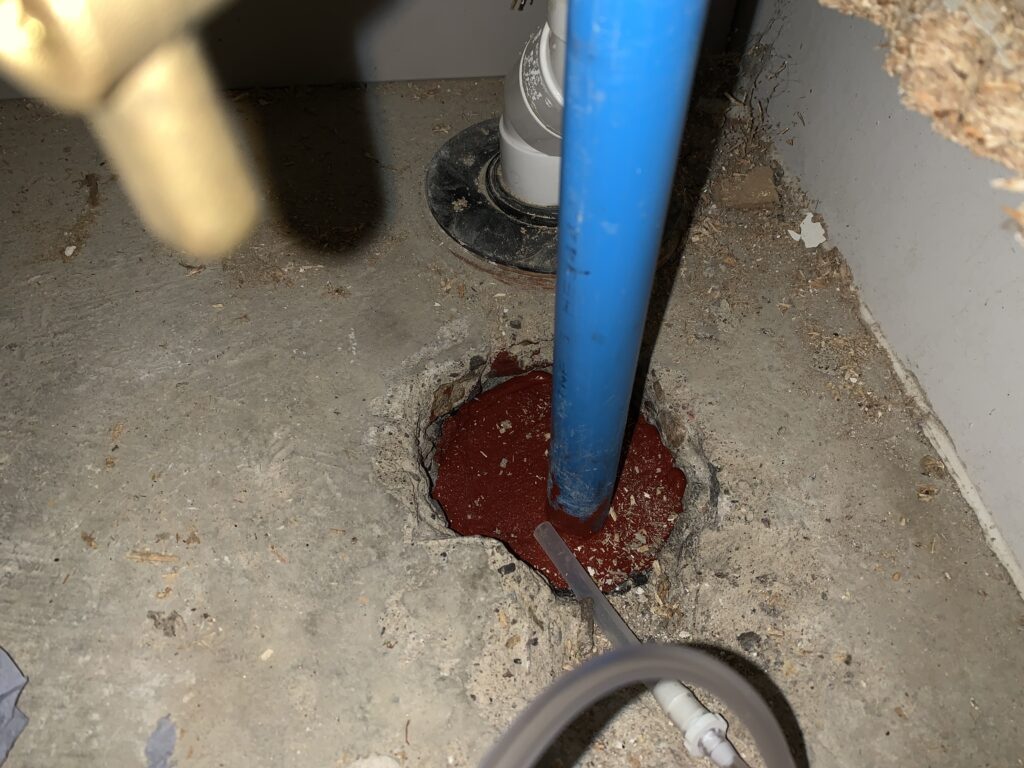
In 2013 reports of illness among residents in Gorebridge, Scotland led to the discovery that carbon dioxide was entering newly-built homes. A total of 22 residents from an overall total of 165 in the affected area were reported to have contacted healthcare services between September 2013 and September 2014. The most common complaints were headaches, dry coughs, dizziness and anxiety. The town is in a former mining area and the development was underlain by old mine workings with shafts present nearby. Subsequent investigations led to the residents being re-located and 64 houses being demolished. Whilst it is arguable whether demolition was appropriate or necessary, a subsequent study by the Scottish Government recommended that consolidated guidance was required for the industry on the investigation and assessment of mine gas risk.
More recently one of the authors has been involved in a site in Northumberland which has very similar circumstances; reports of illness that are symptomatic of exposure to high levels of carbon dioxide followed by investigation and discovery of gas inside the properties. However, in this case a robust investigation followed that determined the points of gas ingress to the properties. This found that the gas was only entering via open, unsealed ducts containing water pipes (also likely the case at Gorebridge). Once these were sealed the gas ingress stopped and the properties were shown to be safe.
In response to the recommendations in the Scottish Government report, in late 2021 CL:AIRE published its Good practice for risk assessment of coal mine gas emissions. The guidance draws on the experience of the authors who all have a good understanding of the issues that caused the Gorebridge incident. It provides a pragmatic but robust framework on which to base a mine gas risk assessment. It is important to note that to those that undertake mine gas assessments that they should not just go straight to the Decision Support Tool in Figure 13.1 without reading and following the advice in the rest of the guide. In particular there are other key reference documents that must be read in conjunction with the guide, as explained in Section 7, Useful Information Sources.
Key take points are:
- Mine gas risk assessments and mitigation design should be carried out by ‘competent persons’ as defined in the National Planning Policy Framework (NPPF) in England and equivalents in the devolved governments.
- It is important to understand the different methods of working coal, the effect this has on the likely presence of a mine gas hazard being present below a site and the corresponding risk of emissions into buildings. At the very least, CIRIA Report C758D (CIRIA, 2019) is considered to be essential reading for anyone undertaking mine gas risk assessments.
- As with any other ground gas assessment development of a Conceptual Site Model (CSM) to avoid an incomplete mental model of the problem is a vital part where there is a source of mine gas, as well as its use in the interpretation of any gas monitoring data.
- Risk assessment using the gas screening values and the ‘points system’ in BS 8485 on its own is not likely to be appropriate where there is a risk of mine gas emissions on sites with complex CSMs or where mass advection of soil gas could occur. Detailed quantitative assessment of gas emissions may be necessary.
- Finally, risk assessors should consider the effect of foundation construction and other buried infrastructure on migration pathways and the integrity of any barrier layers. The risk assessment should be revisited once all below ground, foundation and slab designed has been fixed to make sure it is still applicable.
At the site in Northumberland an old, unsealed borehole or grout hole is considered the most likely migration pathway for the gas to have reached housing. It is vital that after the site investigation or gas monitoring is complete that any boreholes, probeholes, grout holes or wells are decommissioned and sealed to prevent them acting as migration pathways for mine gas. advice on the expectations and requirements of borehole decommissioning has been provided by The Environment Agency and SEPA. In this respect the co-ordinates of all holes should be accurately recorded on the logs. The use of plastic liners that are left in place in grout holes are the major concern for gas migration as they can leave a void around the outside that can form a pathway.
Potential areas of uncertainty in mine gas risk assessment and the effects of future changes in climate should now also be considered. A mine gas risk assessment should be awarded similar resource and effort as would a mineral risk assessment. It is important to recognise that this requires site specific investigation and assessment for relevance and credibility. Generic statements are not deemed appropriate and although a precautionary approach should be applied to any risk assessment, this is not an excuse to invent hypothetical or extremely unlikely hazards or consequences. Bias can occur when there is a desire to be cautious, prudent or conservative in estimates that may be related to harmful consequences. Yet such can also lead to the delivery of unnecessary and costly remedial intervention despite a low probability risks being present. Transparent critical thinking is required in reporting that evidence based.
The CL:AIRE guide can be found here.
CL:AIRE will be running training courses throughout 2022 on how to apply the advice provided in the Guide. These will be delivered by the authors of the guide so will you get a first-hand understanding of the theory and thoughts underpinning it.
Article provided by Steve Wilson (The Environmental Protection Group Ltd) and Alex Lee (WSP)
Image credit to Amy Juden, EPG Limited